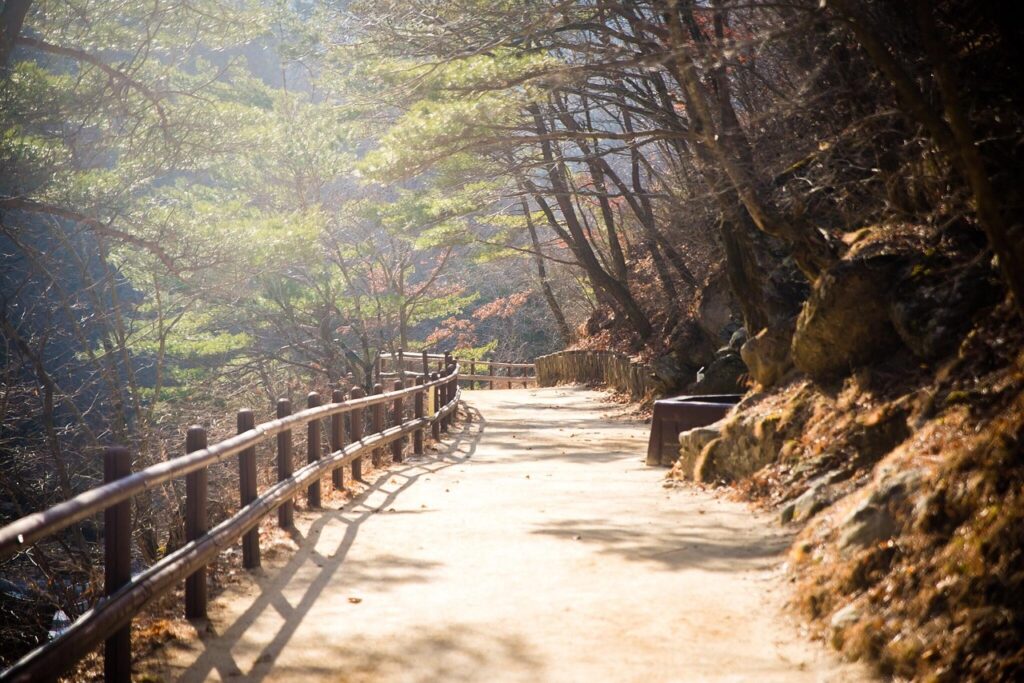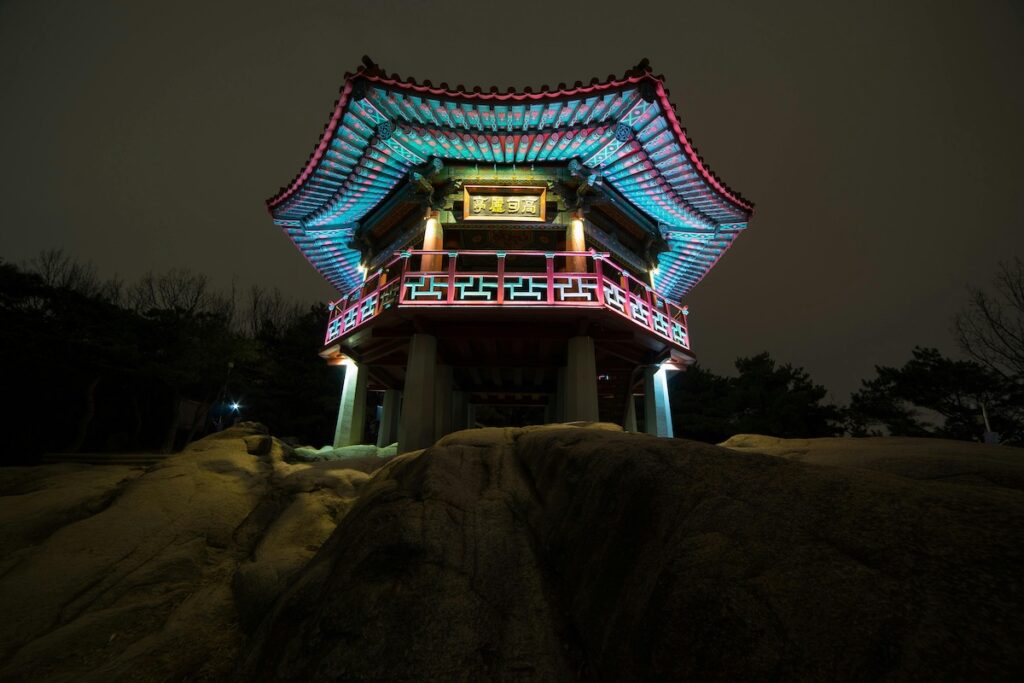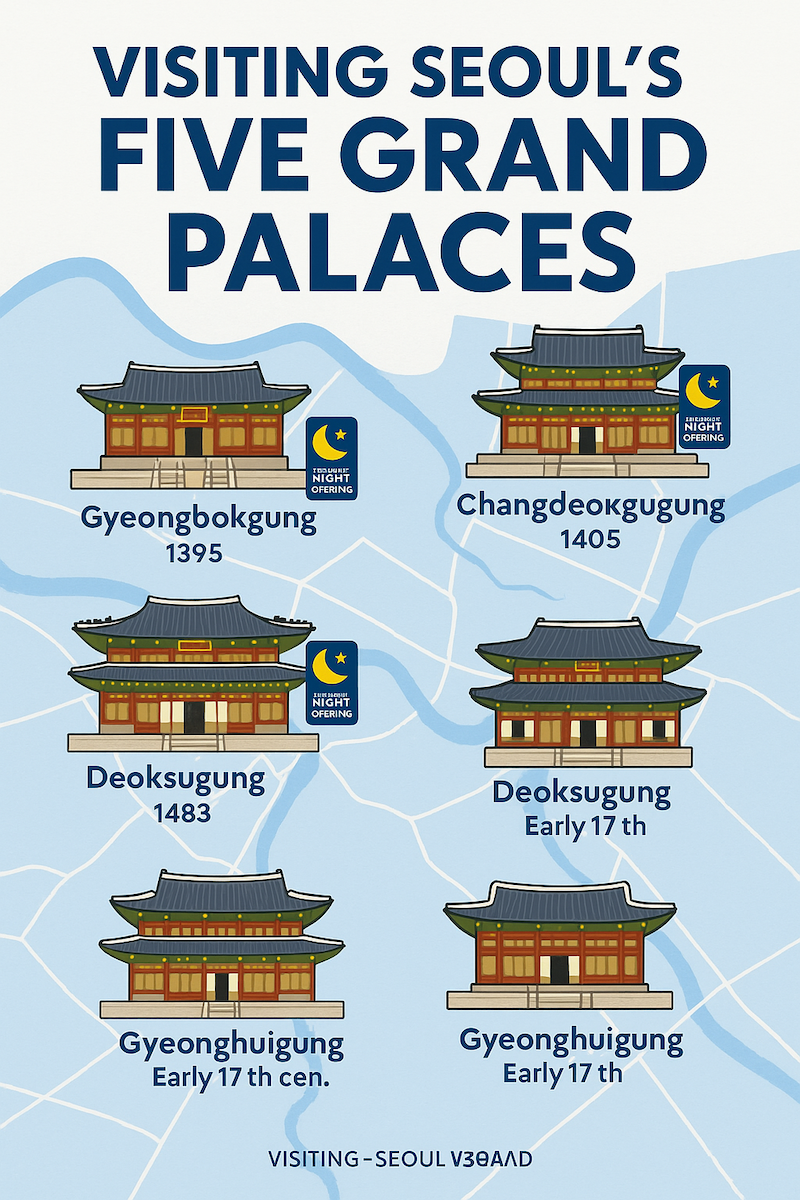Introduction: Discovering Seoul’s Mountain Culture
Few cities in the world balance modern skyscrapers with natural landscapes as beautifully as Seoul. While the capital of South Korea is famous for its vibrant nightlife, K-pop scene, and food culture, it’s also surrounded by dozens of easily accessible mountains. For many locals, hiking isn’t just a weekend activity—it’s part of their identity.
The best part? Most of these mountains near Seoul are accessible by public transport, making them perfect for travelers without cars. In this guide, we’ll explore seven must-visit peaks, each offering unique views, cultural landmarks, and local eateries that define Seoul’s outdoor spirit.
Why Seoul Is a Hiker’s Paradise
Seoul sits in a natural bowl, encircled by mountain ridges that create a skyline unlike any other metropolis. From almost any neighborhood, you can spot a mountain calling for exploration.
With its efficient subway system and interconnected bus routes, reaching hiking trails takes less than an hour from the city center. Whether you’re after a challenging climb or a peaceful forest walk, Seoul’s mountains offer something for everyone—from serious mountaineers to casual nature lovers and even coffee enthusiasts.
Getting Around: How to Reach Mountains by Subway & Bus
Public transport is the easiest way to explore Seoul’s natural side. The Seoul Metro and integrated bus system connect nearly all hiking entrances. Most trailheads start within a 10–15-minute walk from a subway station.
Here’s a quick tip: download the Naver Map or KakaoMap app. Both support English navigation and live bus/subway updates. You can also use a T-money card for seamless transfers between trains and buses.
Now, let’s explore the seven best mountains near Seoul accessible by public transport, starting with the iconic Bukhansan.

1. Bukhansan: The Soul of Seoul’s Hiking Culture
Best Trails in Bukhansan
Bukhansan National Park is Seoul’s most famous hiking destination, attracting millions each year. The mountain’s granite peaks and Buddhist temples make it both physically rewarding and spiritually calming.
The Baegundae Peak (836m) is the highest point in Seoul and offers breathtaking views over the city. If you’re looking for a moderate trail, try the Bukhansanseong Course, which passes ancient fortress walls and serene temples.
Where to Eat Near Bukhansan
After hiking, head to Bukhansan Dulle-gil, where charming restaurants serve mountain vegetable bibimbap, makgeolli (rice wine), and Korean-style pancakes (jeon). A must-try spot is Samgyeopsal Alley near Gupabal Station, known for its sizzling grilled pork. For a cozy rest, Cafe Sanmotungi, located in nearby Buam-dong, offers panoramic views and has appeared in several Korean dramas.

2. Inwangsan: The Mountain of History and Spirit
Hidden Temples and Fortress Views
Located near Gyeongbokgung Palace, Inwangsan offers an intimate mix of history, spirituality, and skyline views. The trail passes Inwangsa Temple, shamanistic shrines, and remnants of Seoul Fortress Wall. It’s a short but steep climb that rewards hikers with spectacular sunsets.
Cafes with a View near Inwangsan
After your hike, explore Buam-dong and Seochon Village, both filled with artisanal coffee shops and galleries. Don’t miss Club Espresso (one of Seoul’s oldest coffee houses) and Coffee Libre, known for ethically sourced beans.

3. Achasan: Easy Hike with a Han River Panorama
How to Get to Achasan
Take Subway Line 5 to Gwangnaru Station or Line 7 to Achasan Station. The trail begins just a few minutes from the exit, making it one of the most beginner-friendly hikes around Seoul.
Local Flavors Around Achasan
After descending, try Achasan Gopchang Alley, famous for grilled beef intestines, or Achasan Sundae-guk for a hearty Korean sausage soup. For something sweet, stop by Cafe Riverhill, which overlooks the Han River and is perfect for a relaxing afternoon.

4. Dobongsan: Majestic Rocks and Quiet Trails
Dobongsan National Park Highlights
North of Seoul lies Dobongsan, a dramatic mountain known for its jagged granite formations and peaceful forest paths. It’s part of Bukhansan National Park but offers a quieter, more rugged experience. The main peak, Jaunbong, rises 740 meters and rewards hikers with a 360° view of the city and surrounding valleys.
Dobongsan is also home to historic temples like Cheonchuksa and Mangwolsa, both more than a thousand years old. The trails are well-maintained, and you’ll often see local hikers dressed in colorful outdoor gear—a quintessential image of Korean mountain culture.
Traditional Eateries Near Dobongsan Station
After your hike, descend toward Dobongsan Station (Line 1 & 7) where a small cluster of local eateries awaits. Here, you can try pajeon (green onion pancake) with makgeolli, a classic post-hike combo. Locals often recommend Baekje Samgyetang, a herbal chicken soup restaurant known for restoring energy after long treks.
If you prefer something casual, grab a hot bowl of jjigae (stew) at one of the small family-run places lining the path. Many have outdoor terraces perfect for relaxing with fellow hikers.
5. Namhansanseong: Fortress in the Clouds
Exploring Namhansanseong Fortress
A UNESCO World Heritage Site, Namhansanseong combines natural beauty and historical depth. Located in Gwangju, just southeast of Seoul, this mountain fortress once protected the Joseon capital from invasions. The well-preserved fortress walls stretch over 12 kilometers, and the main trail winds past gates, pavilions, and scenic lookouts.
The easiest way to get there is to take Subway Line 8 to Sanseong Station, then hop on a local bus or taxi up to the fortress village. The area is particularly stunning in autumn when the surrounding maple trees turn fiery red.
Best Local Restaurants in Namhansanseong Village
The village around the fortress is famous for baeksuk (boiled chicken) and dak-galbi (spicy stir-fried chicken) restaurants that have served hikers for generations. A must-try is Namhansanseong Baeksuk Maeul, where the broth simmers for hours with herbs and ginseng.
Many visitors also stop by traditional teahouses, such as Dahyangheon, to enjoy Korean teas while overlooking the old fortress walls. The tranquil atmosphere perfectly complements the historical setting.
6. Suraksan: Local Favorite for Weekend Hikes
Scenic Spots in Suraksan
Suraksan sits between Seoul and Uijeongbu, offering an authentic glimpse into local hiking culture. It’s less touristy but beloved by residents for its peaceful trails and mysterious rock formations like Suraksan Maebong. The Suraksan Waterfall Trail is particularly popular in summer when the cool air and shade make it ideal for families.
Getting there is easy—just take Subway Line 7 to Suraksan Station, and you’ll find trail signs immediately upon exit.
Nearby Cafes and Rest Stops
After your hike, stroll through Chang-dong or Nowon, neighborhoods dotted with cozy cafes. Cafe Tiamo offers a panoramic terrace, while Hilltop Roasters near the base of Suraksan is known for its mountain-inspired decor and hand-drip coffee. It’s a relaxing place to unwind and watch locals coming down from the trails.
7. Gwanaksan: The University Mountain
Gwanaksan’s Best Hiking Courses
Located near Seoul National University, Gwanaksan is affectionately called “the University Mountain.” Its proximity to several campuses gives it a youthful, lively energy. The most famous trail starts from Seoul National University Station (Line 2) and leads to Yeonjudae Hermitage, a temple dramatically perched on a cliff.
This hike is moderately challenging but incredibly rewarding, offering views of the southern part of Seoul and the Han River.
Campus Cafes and Local Restaurants
After descending, explore Nakseongdae or Bongcheon-dong, where student-friendly eateries abound. Try Gwanak Ttukbaegi, known for bubbling stone-pot stews, or Cafe On the Hill, a peaceful spot overlooking the wooded slopes.
Gwanaksan is also popular for night hikes—locals often climb late afternoon to catch the golden sunset from the ridge and descend by lantern light.
Seasonal Hiking Tips for Foreign Travelers
Each season offers a different side of Seoul’s mountains:
- Spring (March–May): Enjoy cherry blossoms and azaleas around Achasan and Inwangsan. Bring a light jacket.
- Summer (June–August): Start early to avoid heat and humidity. Pack extra water and insect repellent.
- Autumn (September–November): Peak hiking season! Foliage at Bukhansan and Namhansanseong is breathtaking.
- Winter (December–February): Snow transforms the peaks into a serene wonderland. Dress in layers and wear ice grips.
No matter the season, public transport runs reliably, making it easy to plan spontaneous mountain escapes.
Hiking Etiquette and Local Customs
Korean hikers are passionate and respectful of nature. Here are a few cultural tips to blend in:
- Greet fellow hikers with a friendly “Annyeonghaseyo.”
- Avoid loud music—many people hike for peace and mindfulness.
- Take your trash down; bins are rare on the trails.
- Try local hiking food, like kimbap and makgeolli, but consume them at designated rest spots.
- Respect temple areas by speaking softly and dressing modestly.
Following these small gestures helps preserve Korea’s mountain culture and ensures everyone enjoys the trail.
What to Pack for a Seoul Mountain Day Trip
You don’t need expensive gear to enjoy a day hike near Seoul. Just pack smart:
| Essentials | Optional but Recommended |
|---|---|
| Comfortable sneakers or hiking shoes | Hiking poles |
| Reusable water bottle | Portable fan or hand warmer |
| Snacks (kimbap, nuts, fruits) | Small picnic mat |
| Sunscreen & hat | Camera for scenic shots |
| Light rain jacket | Korean hiking app (Naver Map or AllTrails) |
Tip: If you forget anything, outdoor shops near Bukhansan or Dobongsan sell affordable gear and souvenirs.
FAQ: Mountains Near Seoul Accessible by Public Transport
1. Are Seoul’s mountains safe for solo travelers?
Yes, most trails are well-marked and populated. Just start early and follow trail signs in English and Korean.
2. Can I hike year-round?
Absolutely! Winter hikes are common—just prepare for icy conditions on high peaks.
3. Are there restrooms on the trails?
Yes, at major trailheads and rest areas, especially in Bukhansan and Namhansanseong.
4. What’s the best mountain for beginners?
Achasan or Inwangsan—both are short, easy, and have great views.
5. Where can I find vegetarian or vegan food near the trails?
Temple restaurants near Inwangsan and Bukhansan often serve vegetarian Buddhist cuisine (sachal yori).
6. Is it possible to rent hiking gear in Seoul?
Yes, several outdoor shops near Gupabal Station and Dobongsan Station rent or sell budget-friendly gear.
Conclusion: Finding Seoul’s Heart Beyond the Skyline
Exploring the mountains near Seoul accessible by public transport offers a glimpse into a different side of the city—one that blends nature, food, and community. Whether you’re sipping coffee after conquering Inwangsan, sharing a warm meal at Namhansanseong Village, or watching the sunset from Gwanaksan, each experience reveals why Seoul’s hiking culture is so cherished.
So next time you visit Seoul, don’t just look up at the skyline—look toward the mountains. That’s where the city truly breathes.
🌐 External Resource:
For detailed transport info and live hiking maps, visit the official Korea National Park Service site: https://english.knps.or.kr

